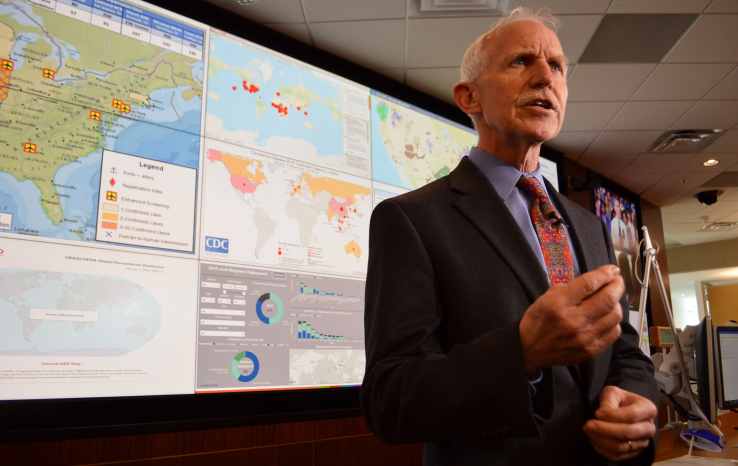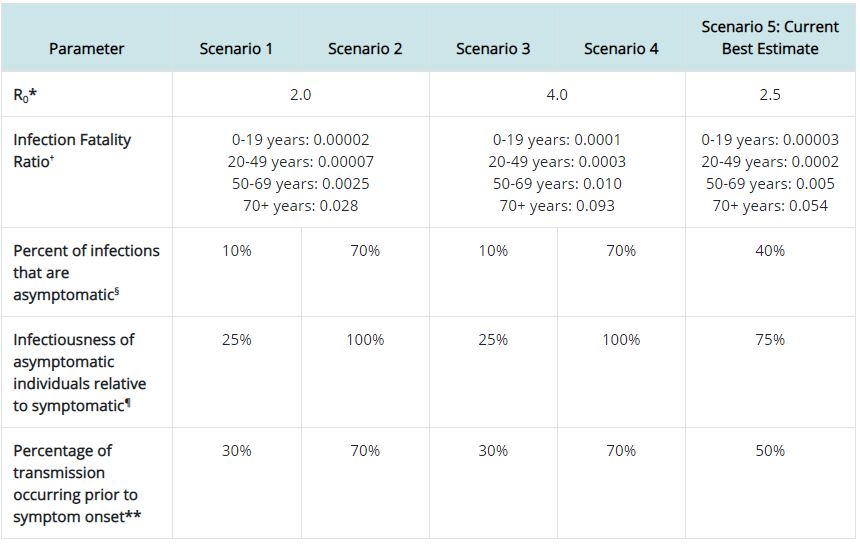CDC data shows that COVID-19 survival rate for adults is 99.98%; chances of surviving coronavirus is over 99.9% for most age groups

The coronavirus pandemic which started in Wuhan, China in December 2019 has claimed at least 253,600 American lives, according to the latest tracking data from Johns Hopkins University. In September, the Institute for Health Metrics and Evaluation at the University of Washington (IHME) predicted that more than 410,000 Americans could die from COVID-19 by the end of 2020.
With governments around the world imposing a new round of lockdowns to combat the second wave of coronavirus, the question remains: Just how deadly is the coronavirus? Who are the most vulnerable and why? To answer some of these questions, researchers and public-health officials use the infection fatality rate to determine how to respond to the deadly virus.
In late August, the U.S. Centers for Disease Control and Prevention (CDC) published its findings on the survival rates for COVID-19 and its controversial provisional death counts. CDC said there is a high survival rate for COVID-19 and individuals are more likely to survive the coronavirus after contracting it. According to the CDC data, 94 percent of all coronavirus deaths, on average, have 2 or more pre-existing conditions or causes per death or co-morbidities.
Based on the stats, it means that less than 10,000 Americans or 6% of the 161,392 US deaths are related to COVID-19 only. Put another way, 94% of Americans who died from COVID-19 had other “types of health conditions and contributing causes” in addition to the virus, the CDC said in the updated report.
The latest CDC data on new survival rates for COVID-19 includes five COVID-19 pandemic planning scenarios “that are designed to help inform decisions by public health officials who use mathematical modeling, and by mathematical modelers throughout the federal government.” According to the CDC, each scenario is based on a set of numerical values for biological and epidemiological characteristics of COVID-19 illness, which is caused by the SARS-CoV-2 virus.
The five COVID-19 Pandemic Planning Scenarios also represent a range of possible parameters for COVID-19 in the United States. All parameter values are based on current COVID-19 surveillance data and scientific knowledge. “Scenarios 1 through 4 are based on parameter values that represent the lower and upper bounds of disease severity and viral transmissibility (moderate to very high severity and transmissibility),” the CDC explained. The CDC says that Scenario 5 represents a current best estimate about viral transmission and disease severity in the United States, with the same caveat: the parameter values will change as more data become available.
Below is a quick summary of the CDC COVID-19 Survival Rates.
Age 0-19 — 99.997%
Age 20-49 — 99.98%
Age 50-69 — 99.5%
Age 70+ — 94.6%
Below is Infection Fatality Ratio for Scenario 5: Current Best Estimate
R0* 2.5
Age 0-19 years: 0.00003
Age 20-49 years: 0.0002
Age 50-69 years: 0.005
Age 70+ years: 0.054
Looking at this data, one can argue that, the most vulnerable age group does (Age 70 and older) does okay with an Infection Fatality Ratio of 0.054. This CDC data should also be sufficient for everyone to feel safe, get the kids back in school, and return back to work. The findings also cast doubts on mainstream media narratives about the potential lockdown later in the year.
Since most in our major news outlets remained silent refuse to cover the news. The state of the media is so bad that it takes a foreign journalist to report the news. Adam Creighton, an Economics Editor, of The Australian and Co-Host of Business Weekend at Sky News Australia, said this on Twitter, “The US govt last week updated the survival rates (i.e., IF infected) for Covid19: …Didn’t see it reported much.”
Below is a screenshot of Table 1 of the CDC 5 planning scenarios.
In Table 1 below, the Parameter Values that vary among the five COVID-19 Pandemic Planning Scenarios. The scenarios are intended to advance public health preparedness and planning. They are not predictions or estimates of the expected impact of COVID-19. The parameter values in each scenario will be updated and augmented over time, as we learn more about the epidemiology of COVID-19. Additional parameter values might be added in the future (e.g., population density, household transmission, and/or race and ethnicity).

CDC is not alone in predicting a high survival rate for COVID-19 survival rate. Another study conducted by Stockholms Universitet in June 2020, reached a similar conclusion. The study titled, “Predicted COVID-19 Fatality Rates Based on Age, Sex, Comorbidities, and Health System Capacity,” found there is a 99.99 percent chance of surviving Covid-19. The study further suggests that the fatality rate from COVID-19 varies greatly across countries.

